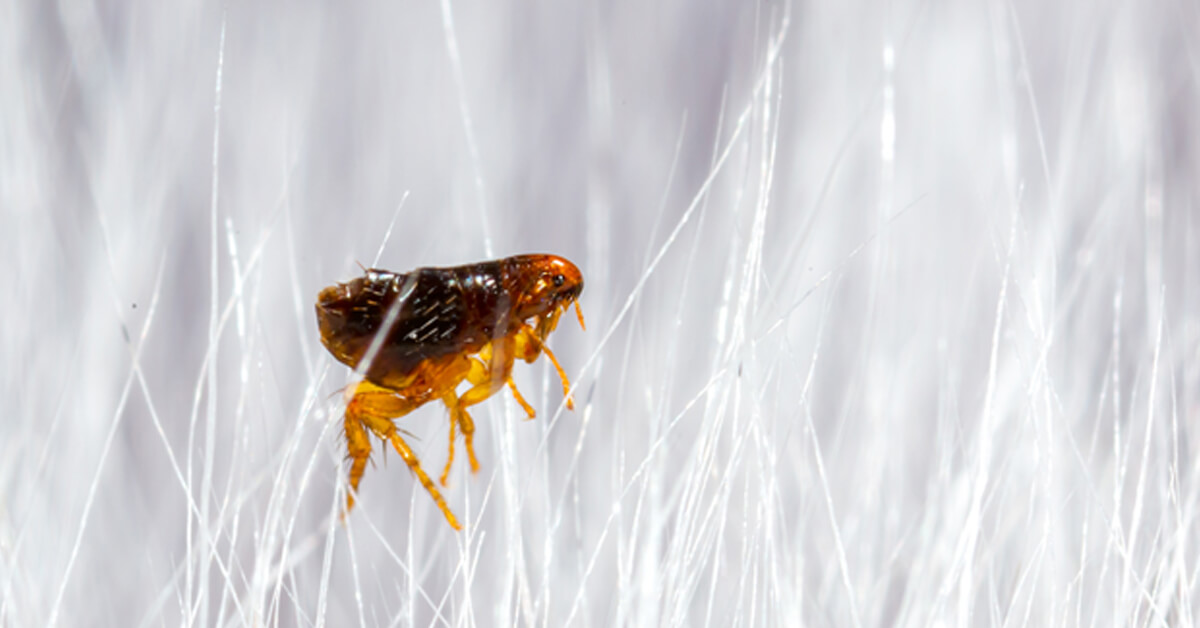HOW LONG DOES A FLEA LIVE?

There are very few pests that drive homeowners any crazier than fleas. These incessant biting pests seem to just pop up everywhere. Even if you don’t have pets, your home can fall prey to them. Once they are in, it’s ridiculously difficult to get them out, which is why professional prevention is the best way to ensure that your home stays free from fleas. Understanding this pest and how it lives and breeds will help you to understand all the challenges that they can bring.
Flea Life-cycle
Adult fleas hop on any warm blooded animal or person for a bite to eat, as well as a place to lay eggs. An adult flea takes a blood meal, and then lays up to 40 eggs a day. She will then defecate blood from her host around the eggs (flea dirt). These eggs and the ‘flea dirt’ will dry up and fall off onto places like your furniture, dog and cat bedding, carpets etc. Within two days these eggs have usually hatched.
The larva that emerge are tiny worm-like creatures that feed upon the ‘flea dirt’. The larva molts 3 times before it is able to spin a cocoon to enter into the pupal stage. The larval stage usually lasts about 5-15 days.
Inside the cocoon the larva starts to transform into an adult flea. These cocoons are very strong and they are camouflaged by dirt and debris that tends to stick to them. These pupas will not come out of their cocoons until they know that there is a host for them to feed on. They sense environmental factors like heat and carbon dioxide, and once they sense a suitable host, they will emerge as adult fleas, have their blood meal, lay their first eggs and start the cycle all over again.
So, if one flea gets in your home. Within 2 days of their first blood meal, they could potentially lay and hatch 40 eggs. These eggs can be 40 adult fleas in as few as 21-30 days. You can go from 1 flea to 80 adult fleas within a month and then you have 80 adult fleas laying up to 40 eggs EACH PER DAY! As you can see, infestation is an understatement.
If you have fleas then your next move should be to call the professionals here at Viking Pest Control. We will get rid of all the fleas and flea eggs in and around your home and take measures to keep them out in the future. We have year round pest prevention programs that will help keep fleas and many other common pests off your property, out of your home, and out of your mind.
- Bed bugs leave their black-colored feces wherever they go. You will find their feces in many places. Most often it will be in the seams of mattresses or around the corners. Sometimes you will only find streaks. These can appear on bed sheets, baseboards, walls, outlets, or on the stitching of upholstered furniture.
- Bed bugs leave their urine behind as well. This will cause staining on sheets and furniture coverings. It will appear light brown in coloring.
- Bugs often drip after feeding. If bed bugs are around, you may see dark brown staining from dried blood.
- These bugs shed their skins as they mature. If you’re finding rust-colored debris in your bed or around the stitching of a couch or chair, there could be bed bugs inside.
- Bed bug bites are also a sign of an infestation. Hopefully, you will not have to find one this way, but be on the lookout. These bites will look like mosquito bites with a rash around them. They will also appear in rows or clusters. This is because multiple bites will come from the same bug, and they feed several times.
If you need more help identifying bed bugs, give us a call. The team here at Viking Pest is up to speed on everything that is currently known about these bugs. We’d be happy to assist.
Call Viking at 800-618-2847 to learn more about pest control and extermination services, or get a fast, free quote online today!










